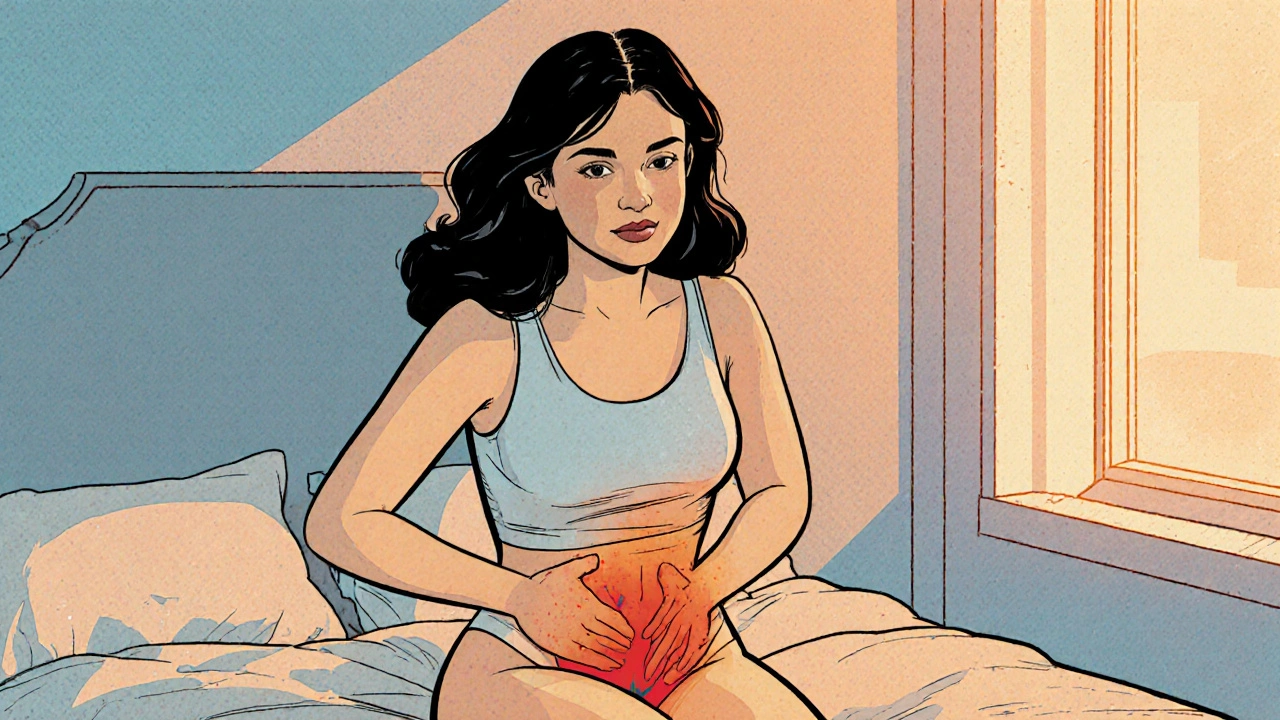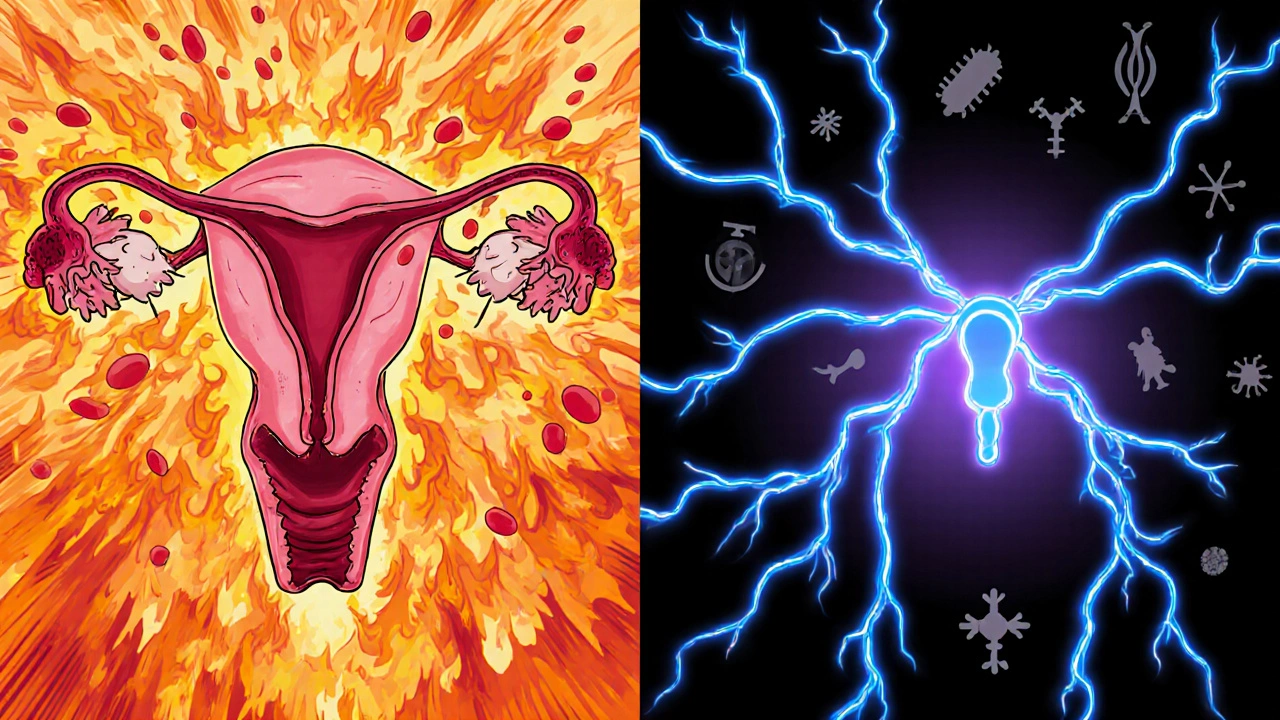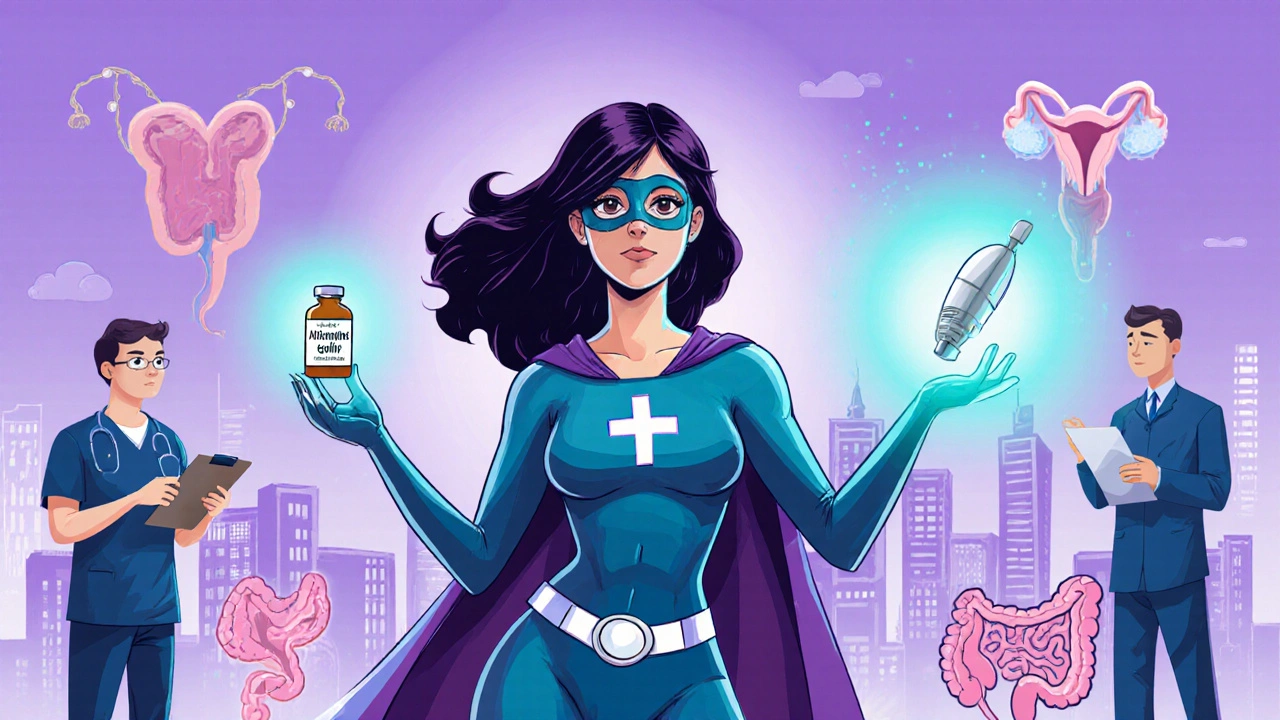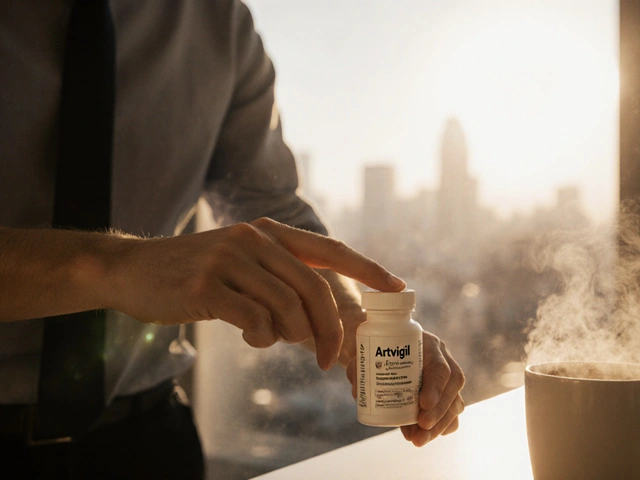
Symptom Assessment Tool
Assess Your Symptoms
This tool helps you understand if your symptoms might indicate a condition that requires medical attention. Remember, this is not a diagnosis, but a guide to help you decide when to see a healthcare provider.
Symptom Information
Vaginal burning is a painful, stinging sensation that may be constant or triggered by touch, moisture, or certain foods. It can range from mild to severe and may disrupt daily activities.
How long have you experienced vaginal burning?
Does the burning occur during or after urination or intercourse?
Do you have chronic pelvic pain that lasts longer than six months?
Are you experiencing any of these additional symptoms?
Personalized Assessment
Key Takeaways
- Vaginal burning can be an early sign of conditions that also cause chronic pelvic pain.
- Inflammation, nerve irritation, and hormonal shifts link the two symptoms.
- Accurate diagnosis often requires ruling out infections, dermatologic disorders, and pelvic organ disease.
- Treatment combines medication, lifestyle tweaks, and targeted pelvic‑floor therapy.
- Seeing a specialist early can prevent long‑term discomfort and improve quality of life.
When a woman reports vaginal burning, the first thought is usually a yeast infection or irritation. But that sharp, stinging feeling can also be a clue that something deeper is happening in the pelvic region. Chronic pelvic pain (CPP) is defined as non‑malignant pain lasting six months or longer, affecting muscles, nerves, or organs in the lower abdomen. The two symptoms often intersect, and understanding the link helps you and your clinician target the right treatment.
Vaginal burning is a painful, burning or stinging sensation in the vaginal walls that may be constant or triggered by touch, moisture, or certain foods. It can arise from infections, dermatologic conditions, hormonal changes, or nerve irritation. The sensation can be mild or severe enough to disrupt daily activities, sexual intimacy, and sleep.
Chronic pelvic pain is pain in the lower abdomen or pelvis lasting more than six months, often without a clear, single cause. The pain may be localized or diffuse, and it can fluctuate with the menstrual cycle, bowel movements, or bladder filling. CPP affects up to 15% of women worldwide, making it a significant public‑health concern.
What Triggers Vaginal Burning?
Several common culprits can ignite a burning feeling:
- Infections: Yeast infection (Candida albicans) typically produces itching, thick discharge, and burning after intercourse or urination.
- Bacterial vaginosis: An overgrowth of anaerobic bacteria creates a fishy odor, thin gray discharge, and sometimes mild burning.
- Sexually transmitted infections (STIs) such as Trichomoniasis or herpes can cause intense burning and ulcerations.
- Dermatologic conditions: Vulvodynia is a chronic pain syndrome where even light touch feels burning, often without visible lesions.
- Hormonal shifts: Menopause, low estrogen, or hormonal contraceptives can thin the vaginal epithelium, making it more sensitive.
- Irritants: Perfumed soaps, douches, tight synthetic underwear, and certain lubricants can strip protective mucous layers.
These triggers don’t act in isolation. For example, prolonged antibiotic use can disrupt the vaginal microbiome, leading to yeast overgrowth that later fuels vulvar inflammation. That inflammation may then sensitize nearby nerves, bridging the gap to chronic pelvic pain.
Understanding Chronic Pelvic Pain
CPP is a broad umbrella that captures pain from multiple sources:
- Pelvic inflammatory disease (PID) - an infection of the upper reproductive tract often following untreated STIs.
- Endometriosis - endometrial tissue implants outside the uterus, causing cyclic or constant pain.
- Interstitial cystitis - a bladder condition that triggers burning during urination and pressure in the pelvis.
- Irritable bowel syndrome (IBS) - gut dysmotility that can radiate to pelvic muscles.
- Neuropathic pain - nerve damage or hypersensitivity after surgery, childbirth, or trauma.
Because CPP often involves overlapping organ systems, a single symptom like vaginal burning might be the tip of the iceberg.

Shared Pathophysiology: How the Two Symptoms Interact
Three major mechanisms tie vaginal burning to chronic pelvic pain:
- Inflammation: Infections or irritants cause local cytokine release. Cytokines spread to nearby nerves, lowering their pain threshold.
- Neuropathic sensitization: Repeated irritation damages small sensory fibers (C‑fibers) that innervate the vulva and pelvic floor, leading to chronic burning.
- Hormonal modulation: Estrogen deficiency thins mucosal barriers, making the vagina more vulnerable to micro‑abrasions that trigger pelvic‑floor muscle spasm.
Research from the International Urogynecology Society (2023) shows that women with vulvodynia are three times more likely to develop CPP within two years, underscoring the clinical relevance of early identification.
Common Underlying Conditions - A Comparative Look
| Condition | Typical Vaginal Burning? | Typical Chronic Pelvic Pain? | First‑line Treatment |
|---|---|---|---|
| Yeast infection | Yes - intense burning after intercourse or urination | Rare - may trigger secondary pelvic muscle tension | Topical or oral antifungals |
| Vulvodynia | Yes - constant or provoked burning without infection | Often - pelvic floor hypertonicity common | Pelvic‑floor physical therapy, topical lidocaine |
| Endometriosis | Occasional - lesions near the vaginal introitus | Yes - cyclic deep pelvic ache | Hormonal suppression, laparoscopic excision |
| Interstitial cystitis | Yes - burning during voiding may radiate outward | Yes - bladder pressure and pelvic discomfort | Pentosan polysulfate, bladder instillations |
| Pelvic inflammatory disease | Variable - may accompany discharge | Yes - constant lower‑abdominal pain | Broad‑spectrum antibiotics |

When to Seek Professional Help
Self‑care works for mild irritations, but you should book an appointment if any of the following appear:
- Burning persists for more than two weeks despite hygiene changes.
- Pain interferes with work, sleep, or sexual activity.
- Accompanying symptoms such as fever, abnormal bleeding, or discharge.
- History of recurrent urinary or reproductive infections.
During the visit, expect a comprehensive assessment:
- Medical history - menstrual cycle, sexual activity, medication use.
- Physical exam - speculum inspection, pelvic‑floor muscle tone evaluation.
- Laboratory tests - vaginal swab for fungus, bacteria, STI panels.
- Imaging if needed - ultrasound or MRI to rule out endometriosis or structural anomalies.
Urogynecologists, pelvic‑floor physiotherapists, and pain specialists often collaborate to create a personalized plan.
Management Strategies: From Relief to Recovery
Effective treatment usually blends three pillars: infection control, nerve modulation, and lifestyle modification.
1. Treat the Root Cause
If labs reveal Candida, a short course of fluconazole (single 150mg dose) often clears the infection. For bacterial vaginosis, metronidazole 500mg twice daily for seven days is standard. When an STI is identified, partner treatment prevents reinfection.
2. Calm the Nerves
Topical agents such as lidocaine 5% ointment provide temporary relief for vulvar burning. Neuropathic pain medications-gabapentin (starting 300mg at night) or duloxetine (30mg daily)-help re‑wire oversensitive nerves. In refractory cases, pelvic‑floor Botox injections can relax hypertonic muscles.
3. Lifestyle Tweaks
- Switch to fragrance‑free, pH‑balanced cleansers.
- Wear breathable cotton underwear; avoid tight leggings.
- Stay hydrated and limit caffeine, which can irritate the bladder.
- Incorporate gentle pelvic‑floor stretches or yoga under a therapist’s guidance.
- Consider estrogen creams if you’re post‑menopausal and have atrophic changes.
Regular follow‑up every 3-6 months allows adjustments based on symptom evolution.
Frequently Asked Questions
Can vaginal burning be a sign of something serious?
Yes. While many cases are benign, persistent burning can signal infections, dermatologic disorders, or early stages of chronic pelvic conditions like endometriosis. If it lasts beyond two weeks or is accompanied by fever, bleeding, or severe pain, see a clinician promptly.
Is there a direct link between vulvodynia and chronic pelvic pain?
Research shows a strong correlation. The chronic nerve irritation that creates vulvar burning often spreads to pelvic‑floor muscles, leading to ongoing pelvic discomfort. Treating one condition frequently improves the other.
Do hormonal changes during menopause cause burning?
Yes. Declining estrogen thins the vaginal lining, reduces natural lubrication, and makes the tissue more prone to irritation. Low‑dose estrogen creams or vaginal tablets can restore moisture and reduce burning.
Can diet affect vaginal burning and pelvic pain?
Certain foods-spicy dishes, citrus, alcohol, and caffeine-can exacerbate bladder irritation and vaginal sensitivity. A balanced diet rich in probiotics (yogurt, kefir) supports a healthy vaginal microbiome, potentially lowering infection risk.
When is surgery considered for chronic pelvic pain?
Surgery is a last resort, typically for proven structural issues like deep endometriosis nodules or severe pelvic organ prolapse. Minimally invasive laparoscopy or robotic surgery can remove offending tissue, but success rates vary, so conservative management is tried first.
16 Comments
Write a comment
More Articles

Reed Herb Benefits: Unlocking the Power of a Hidden Supplement Gem
Dig deep into the world of reed herb—the supplement hardly anyone talks about, but everyone should. Find out what's really inside reed herb, how people have used it for centuries, and what new science says about its benefits. Practical tips, relevant research, and even some surprising facts await. This guide is everything you need to know if you're thinking about trying reed herb. No fluff—just useful, real-world info for curious minds.

HIV in the Developing World: Challenges and Opportunities for Progress
As a blogger who focuses on global health issues, I've recently delved into the topic of HIV in the developing world. The challenges faced in these regions include lack of access to healthcare, limited resources for prevention and treatment, and cultural barriers that hinder education and awareness. However, there are also significant opportunities for progress, such as increased global funding, innovative strategies to educate communities, and advancements in antiretroviral therapy. By working together and addressing these challenges, I believe we can make a substantial difference in the fight against HIV in the developing world. Let's continue to raise awareness and push for change!

Shanmugapriya Viswanathan
October 16, 2025 AT 15:40Listen up, ladies – our Indian heritage has always known that hormonal swings can turn your vagina into a furnace 😅. Ayurvedic herbs like shatavari and neem have been used for centuries to balance estrogen and keep the mucosa supple. If you ignore those natural options, you’ll end up chasing endless pharma prescriptions. The inflammation cascade starts silently, but once the nerves are primed, the burning feels like a tiny firecracker stuck inside. So before you label it a mystery, consider diet, stress, and those time‑tested herbal allies.